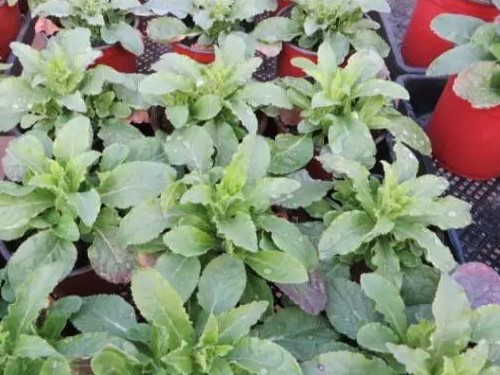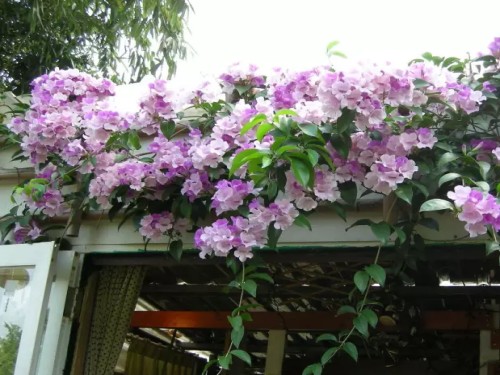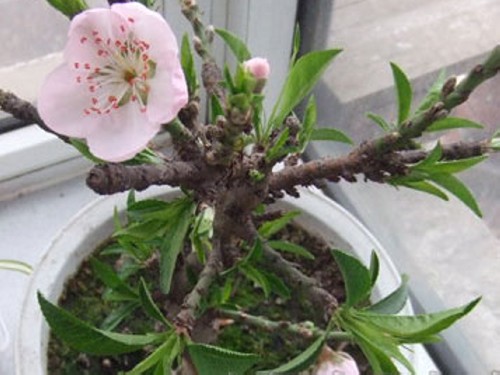How to plant potted bluebells
Bluebells are also called bluebells, and bell flowers are named because their flowers are similar to wind chimes. at present, there are more than 200 species, such as Rabdosia rubescens, purple bells, etc., which are suitable for growing in the north temperate zone and are more common in Europe. Its branches are stout, the stems are slender and transverse, the leaves are alternate, the leaves at the base are generally rosette, and a single flower is composed of umbels or panicles, and the colors are mainly blue and white, fresh and elegant.
Campanula is suitable for configuring small gardens as flower beds and flower border materials. Mainly used as potted flowers, can also be used in open fields for flower borders. Campanula is suitable for configuring small gardens as flower beds and flower border materials. If you use bluebells and ornamental sunflowers as the main materials, with ivy, sea gold sand, carnation basket, the performance of vitality, prosperity of the happy atmosphere. Such as purple bluebells as the main flower, with white lilies, swallows, Tianmen winter flower arrangement, will appear quiet and soft.

The "Fengling" series is a naturally dwarfed potted bluebells. A variety that can blossom without low temperature vernalization. Compared with other varieties on the market, it has more branches, longer flowering period and more abundant flowers. The plant height is 30-35 cm. The special blue is very eye-catching. Pink was introduced in 2014. The following is to introduce the cultivation points of potted bluebells:
I. Seedling management stage
It takes 5 weeks to grow in a 200-hole plate, and the germination temperature is 18-20 degrees. PH 5.8-6.2. After sowing, gently cover a certain amount of vermiculite, maintain high humidity, and keep 20 degrees in the germination chamber for 4 days can improve the uniformity of germination. The temperature is very critical during the breeding period, which is controlled at about 20 degrees. It is possible to avoid overgrowth on the one hand and lotus seat on the other.
Special attention: in order to prevent the seedlings from blooming ahead of time, be sure to control the light within 12 hours at the seedling stage. If possible, it is recommended to cover it with a black film to shorten the lighting time. The problem shown in the figure:
II. The stage of planting management
When the seedling has 3 true leaves, it can be planted! It can be directly colonized into a basin of 10 cm, 12 cm and 15 cm. It is recommended that large pots should be used as far as possible, and the plant type planted in large pots is better.
One month after potting, we must pay attention to control the light time less than 12 hours to ensure adequate vegetative growth. The temperature is controlled at about 20 degrees. When the root system is fully grown and the number of leaves reaches 8-10, Fengling begins to differentiate into flower buds.
Third, take the lead
If you want to get a round plant type, when the arrow sticks out, this is the best time to start. The flowering time will be delayed by 5-7 days, but the plant type can be better controlled. When the plant is full, it is recommended to spray 5000ppmB9 once during this period, which can effectively control the plant type. If you do not carry out any head or B9 treatment in the large flower box application is also high-end atmospheric grade.
IV. Cultivation and management
Cultivation and management is simple. It is required that the environment should be warm in winter and cool in summer, adequate light and good ventilation, not resistant to dry heat, not strong in cold tolerance, like neutral soil with deep, fertile and good drainage, seedlings can grow normally in slightly alkaline soil and need to be transplanted once, and the soil should be kept moist during the growing period. fertilize once a month. The north needs to survive the winter in a greenhouse or open field to protect against the cold. Seedlings should be given a certain degree of shade to avoid strong sunshine when they pass the summer.
The Mediterranean climate with warm and humid winter and no hot and hot summer is the most suitable cultivation area in China, such as the cloud and Guizhou plateau in the southwest. Cold resistance is poor, the north is only suitable for overwintering indoors or in plastic sheds. The vast low-heat areas in the south have poor growth in summer, so they need to adjust the planting period or summer watering to cool down, like light, and are not resistant to shade. The requirement of soil fertility is not strict, but the growth of fertile, moist and well-drained sandy loam soil is the best, while that of clayey soil is poor. Like slightly acidic to slightly alkaline soil, the southern soil is mostly strongly acidic, it is appropriate to apply appropriate amount of lime to neutralize the soil. Sufficient Rain Water is needed during the growing period, but stagnant water is avoided at the root, the bed should be slightly higher and pay attention to drainage. When planting, apply sufficient barnyard manure or calcium magnesium phosphorus and lime as base fertilizer, apply nitrogen fertilizer 2 or 3 times at seedling stage, and apply compound fertilizer before flowering. There are few diseases and insect pests, but the florescence should be prevented.
Time: 2019-05-24 Click:
- Prev

How to grow garlic vines
Garlic vines are native to South America, Guyana and Brazil, and are distributed in South China. Because of its dense branches and leaves, colorful flowers and strong garlic flavor, insects avoid them, so there are few obvious diseases and insect pests in cultivation, which can be used for ground planting, potted plants or for decoration of fences, fences, pavilions and scaffolding.
- Next

Can I plant peach trees on the balcony?-Peach trees bonsai suitable for balcony
Peach blossom bonsai has high ornamental value and is a commonly used material in literary creation. From March to June every year, peach blossoms are in full bloom. The family has planted a pot of peach blossom bonsai, which is nearly 20 years old, with beautiful trees, sparse branches, plump flowers and bright colors.
Related
- Fuxing push coffee new agricultural production and marketing class: lack of small-scale processing plants
- Jujube rice field leisure farm deep ploughing Yilan for five years to create a space for organic food and play
- Nongyu Farm-A trial of organic papaya for brave women with advanced technology
- Four points for attention in the prevention and control of diseases and insect pests of edible fungi
- How to add nutrient solution to Edible Fungi
- Is there any good way to control edible fungus mites?
- Open Inoculation Technology of Edible Fungi
- Is there any clever way to use fertilizer for edible fungus in winter?
- What agents are used to kill the pathogens of edible fungi in the mushroom shed?
- Rapid drying of Edible Fungi

